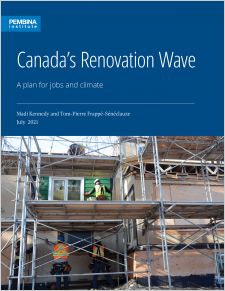
A renovation wave of decarbonization retrofits over the next 20 years could create up to 200,000 long-lasting well-paid jobs, generate more than $48 billion in economic development each year, create significant savings in healthcare costs, and pay for themselves twice over through increased tax revenue.
This wave will require about $15 billion per year for residential buildings and $6 billion per year for commercial and institutional buildings.
The federal government, in partnership with the provinces, will need to commit public investments on the order of $10-15 billion per year over the next 20 years to enable this renovation wave.
In this analysis, we use a heuristic model to calculate the benefits of a nation-wide renovation wave that would see most of Canada’s buildings be retrofitted over the next 20 years. Investing in energy renovations is an excellent way for government to accelerate recovery and sustain economic growth because the actions needed to decarbonize buildings — manufacturing and installing windows, installing heat pumps, insulation, etc. — are labour-intensive, and located where people live: in big cities, suburbs, and small towns. They create well-paid jobs in the trades, manufacturing, and professional services, for small-scale contractors and larger firms. They also strengthen community fabric and reduce social inequity by preserving affordable housing, preserving heritage, and improving health of residents.


